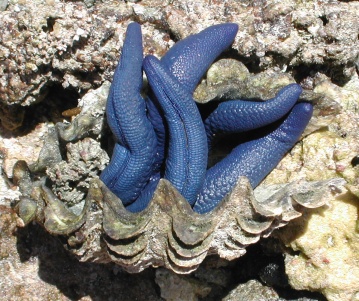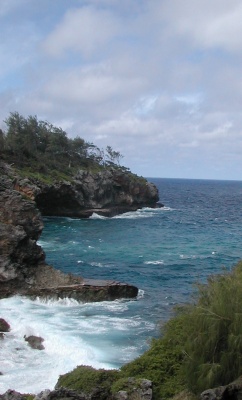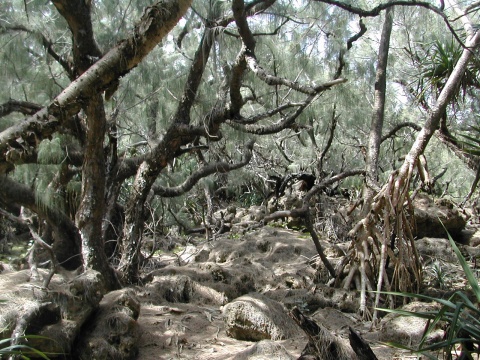EASTERN ISLANDS
There is a large coral shelf that runs from Neiafu Island in the north to well below Taunga Island in the south. This shelf separates the eastern islands from the rest of the islands of Vava’u. But there are two passes through which boats can cross the shelf – the Fanua Tapu pass and the Fonua ‘Unga pass. The Fanua Tapu pass is marked much better than the Fonua ‘Unga pass, so we chose to cross the shelf via the former.
We have navigational charts for the area as well as three cruising guides. After studying all of them, it seemed that our anxiety was more than the actual pass warranted. We were heading from west to east, so we went through the pass in the late afternoon with the sun behind us, and visibility was adequate. The pass was just as described in the cruising guides, and it was a breeze to navigate.
There are two north-south lines of eastern islands. There is one line just east of Neiafu which includes ‘Olo’ua, Mafana, and Ofu. Each of these islands has an accessible anchorage. Then there is the far eastern line which includes Koloa, Faioa, Umuna, Kenutu, and Lolo. Of these islands, only Kenutu has an anchorage – the others are too shallow.
We were heading for Kenutu Island, which does require some watchful navigating, and the sun was sinking behind a thick cloud bank. Our visibility dropped substantially, so we diverted to Ofu Island for a night with plans to make Kenutu Island mid-day the next day.

Whale tail rock
Ofu is a small island with a quaint looking village. The only buildings visible from the anchorage, other than dwellings, are the school and church. There is no electricity, and there are no vehicles. This island, although only a few miles from Neiafu, seems a world removed.
As we looked around at the scenic environment, we thought we saw a whale’s tail in our peripheral vision a few times. When we looked toward it, we could see that it was a rock in the pass between Ofu and Mafana Islands. But it caught our attention a few times.
In the morning, we wanted to get to our destination of Kenutu, so we decided to not go ashore. We did a few boat chores then headed for Kenutu when the sun was high overhead.

Starfish eating a clam

The rugged east shore of Kenutu Island
We first explored just offshore in the dinghy. We have never seen so many starfish. They are around 10″ in diameter, and they are colored red, brown, and black. Near shore there is short grass, and lots of life is moving around within the grass.
Onshore, we hiked down to the pass between Kenutu and Lolo Islands while the tide was low. We found good shelling and great tide pools. There were many sponges and countless sea slugs. There were also lots of sapphire blue starfish of about 6″ diameter, and we found one inside of a clam shell eating it.
We wanted to cross over the island to see the rugged east side. After a few dead ends, we found a foot path that crossed over, and what a view! The shoreline is extremely steep and rugged. Waves explode on the cliffs and spray flies in all directions.
We hiked south along the ridge as far as we could, and found thick stands of pandanus and iron wood trees. We hiked through an area where the needles from the iron wood trees are so thick that they appear as a carpet covering its surroundings. A bit eerie but beautiful.
We had read that there is an enormous cave with a fresh water pool on Umuna, and we went looking for it the following morning. Any foot path that might have once existed is gone, and we could not find it.
We noticed thunderstorms heading toward us, so we returned to the boat and set a second anchor. Just as the anchor was secured, it started to blow and rain, and that continued through the night. It was a blustery night, but we were secure on two anchors.
The following morning, we decided to head back to Neiafu. We needed to start getting ready for our passage south, and we wanted to see our friend, Gwen, for her birthday. So after only two days in this rugged place, we weighed anchor and headed back to the bright lights of Neiafu.
Return to our Neiafu page or jump forward to our Ha’apai page.

An eerie carpet of iron wood needles